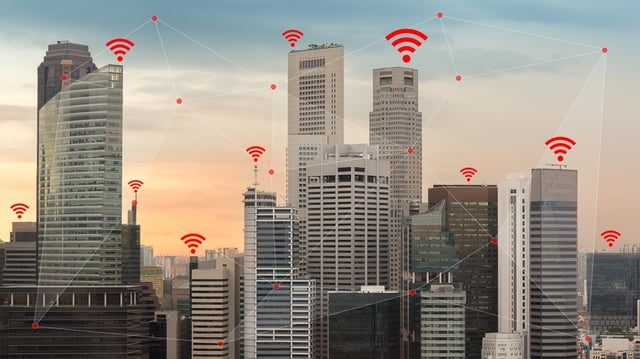
Moving a business’s offices is a complex task with a lot of moving parts that requires meticulous planning to ensure that operational impact is minimized. One of the key elements to keeping those operations and business processes moving is the wireless network.
A business move means essentially selecting a wireless network that will meet the needs of a business in its new location, but in order to accomplish that, you have to start with a WiFi site survey. Understanding the reasons why this is important to your office move will determine if your business hits the ground running or hits the wall in its new location. Here are five reasons why that site survey is important.
Reason #1: To Meet the Needs of a Particular Business Type and Expanded Staff/Processes
The nature of the business and the reasons for the move are important considerations, as the move is often due to expansion needs. How the business will use the wireless network is crucial as well. While dead spots are to be avoided at all costs, even in an office environment with only data clients using the wireless network for internet access, that becomes critical in fields like healthcare where access must be flawless in every corner of the building.
Reason #2: Accounting for the Physical Building and Its Layout
Moving business offices and ensuring that the WiFi network meets the needs of the business means understanding the effects of various building materials and obstacles on the performance of the network.
Obstructions between the access point (AP) and stations can lead to diffraction, refraction, and reflection of the RF signal and degrade the signal quality or even lead to RF spillage outside the corporate physical boundary. Given the effect that metals can have on signal quality, it is important to note the location of steel and other metal materials in the site infrastructure.
Reason #3: Detecting Interference Sources Within and Adjacent to the Location
A survey can detect interference devices, APs installed by a neighbor, and other interference that will rob a wireless LAN of performance. The tricky part of solving interference issues is locating the source of the problem.
A WiFi site survey can identify what may be a combination of several interference sources, including both WiFi and non-WiFi sources. That may be interference from the existing WLAN, a neighbor’s WLAN, or sources outside of the 802.11 band. These negative effects can add up and combine to create a large interference at a particular location.
A detailed and meticulous site survey will pinpoint and account for all possible sources of interference, which would include all APs in the same or neighboring channels. To make matters worse, interference can come from sources other than WiFi devices: microwave ovens, cordless phones, RF jamming devices, FHSS devices, Bluetooth devices, and many others.
This means that to understand interference in the network, one needs to visualize and understand the whole wireless environment. While this appears challenging on the surface, proper execution with the right tools, survey processes, and expertise can make it a straightforward affair.
Reason #4: Avoiding Co-Channel Interference
Interference can come from the interaction of APs in an office building, as well as from other sources if not properly plotted. Consequently, a WiFi site survey enables a quick check to see if the channel plan is causing any co-channel interference between access points that can lower overall throughput.
Reason #5: Setting a Baseline for Network Security and Quality of Service
Establishing strict security in a business WiFi network may mean separation between WiFi networks that are used by employees and the network provided to on-site business customers, as in a retail setting. This becomes particularly important when it comes to securing virtual environment access and when there is PCI PHI information flowing between the two. A site survey becomes even more imperative as you make plans for the different APs and how they will serve, be divided, and provide security through segmentation for business use and customer use.
Obviously, RF spillage outside the corporate building should be kept to a minimum, unless service is extended to customer access via a separate network. This becomes a crucial part of ensuring that the overall network is secure, as unauthorized personnel can gain access to the corporate network without proper planning. Proper physical security measures can be implemented based on the WiFi site survey to nullify such unauthorized access, so it fits into a business’s overall security vulnerability assessment.
A site survey is fundamentally about quality of service (QoS), as it’s critical that all network users have sufficient throughput and wireless APs that are properly arranged to share the client load. A WiFi site survey and the eventual site plan that will define the network build in the new office must take into account an understanding of the applications being used by the business and their throughput needs.
This capacity plan establishes throughput for each end user based on his or her location in the building and his or her networking needs. Without a site survey and a capacity plan, it is impossible to calculate those capacity needs and end-user requirements.
Once the average end-user requirements are established, a detailed site survey conducted by a skilled technician enables accurate determination of the maximum number of end users matched to each AP with the proper throughput for their needs. Together, these five points as part of that capacity plan build the foundation to a network design that is cost-, coverage-, and security-effective for the business in its new space.





Comments